Alpine lunchtime cooking varies from country to country, so to taste the best of it you need a few linguistic pointers. If you don’t know your Grolle from your Germknödel here is the first of our culinary mountain guide to Austria, complete with recipes, so you can try them yourself at home.
This week: Austria
With thanks to the Austrian National Tourist Board, Visit Tirol, Kitzbuheler Alps, and Salzburgerland for their help in compiling their list of favourite Austrian cooking – along with recipes.
Apfelstrudel (lit: apple pastry)
The best known Austrian cooking actually originated in the Hungarian bit of what was once the Austro-Hungarian Empire, but Vienna has long since claimed it as its own. Ideally it should be accompanied by Viennese coffee.
Ingredients
¼ kg (2 cups) very fine flour
1 tsp salt
1–2 tbsp oil
about 1/8 litre (1/2 cup) lukewarm water
100g dry breadcrumbs
125g butter
1.5-2kg mix of apples,
sugar,
cinnamon,
ground cloves,
walnuts and raisins
Method
For the Strudel dough, mix together flour, salt, oil and enough lukewarm water to make a soft dough. Knead very well until it becomes silky and smooth.
Form the dough into a loaf, cover and allow to stand for about 30 minutes. Roll out the dough on a table covered with a floured cloth. Place your hands under the dough and, using your thumbs and the back of your hand, gently begin pulling and stretching the dough until wafer-thin. Trim away the thick edges.
Brown the breadcrumbs in some of the butter until golden brown. Brush the Strudel dough with melted butter and spread the breadcrumbs over it. Peel and core the apples, cut into thin slices (a cucumber slicer may be used) or grate coarsely. Season with sugar, cinnamon and a pinch of ground cloves and spread on top of the breadcrumbs.
If you like, scatter a few raisins and/or coarsely grated walnuts on top. Using the cloth to help lift the dough, roll up the Strudel from the sides. Place it seam side down on a baking tray, brush generously with butter and bake at 180°C (350°F) until golden brown. Sprinkle with icing sugar.
Germknödel (lit: yeast dumpling)
Despite its unfortunate name in English, this is a classic sweet and tasty pud is much loved by children and adults alike. We have to say that it’s not one for those of us who grew up avoiding blancmange. The preparation time is quite lengthy, as is the recovery time after eating it. It is normally served with vanilla sauce (the excellent Austrian excuse for custard) or with poppy seeds and melted butter. After lunch, do not consider doing more than the final run home.
Ingredients
30g yeast
500g flour
70g sugar
70g butter
¼ litre warm milk
2 egg yolks
8g vanilla sugar
300g plum jam
1 tbsp rum
150g crushed poppy seeds
salt
grated lemon peel
100g butter
icing sugar
Method
Mix the dough ingredients together to form a stiff yeast dough. Allow the dumpling portions to rise, then make a hole in the centre of the dumpling, and fill with plum jam. Leave to settle and rise again.
Put the dumplings into simmering salt water, cooking for 3 minutes on one side, turn over and cook for a further 4 minutes. Top the dumpling with crushed poppy seeds, icing sugar and drizzle with melted butter. The Germknödel is also good served with vanilla sauce, similar to custard.
Glühwein (lit: glow wine)
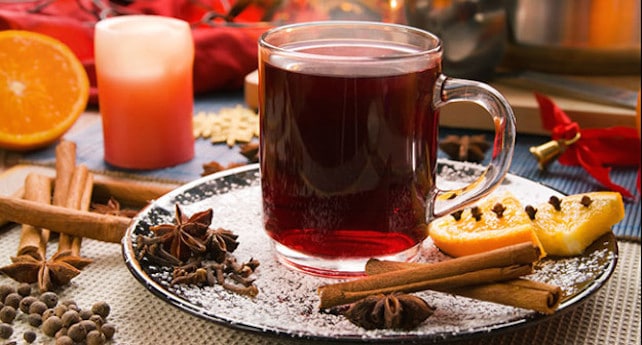
Mulled wine has been a popular winter drink since the Middle Ages, nowhere more so than in the mountains of Austria. Perfect on a cold day in a mountain hut. Unless you are feeling particularly adventurous there’s no need to plunge a white hot poker from the fire into your tankard – a gas ring can do the job rather better. The secret to great Glühwein is the right mixture of red wine, cinnamon, sugar, oranges and cloves.
Ingredients (serves 10)
2 bottles of good quality red wine
2 cups of water
6 cloves
2 cinnamon sticks
2 oranges – cut into bite-size pieces
oranges for decoration
Method
Put all ingredients in a pot and bring it close to boil. For additional taste, cut 2 oranges into bite-size pieces and add to the wine. Let simmer. Remove cloves and cinnamon sticks before serving it into lightly pre-warmed glasses. Decorate glasses with an orange slice.
Gulasch Suppe (lit: Gulasch soup)
Despite the ‘starter’ classification this is a meal in itself, providing a very economical mountain lunch. In Austrian cooking it is usually served with a round bread roll. If you’re feeling particularly peckish, follow it with Ein Paar Wurstl – a couple of joined-together frankfurters. They are served Mit Senf (with mustard), ketchup – and chips if you must.
Ingredients (serves four)
400g beef
3 onions
4 potatoes
1 tbsp tomato puree
1 tsp salt
1 tbsp paprika
caraway seeds
wine vinegar
oil
Method
Cut the beef and the potatoes into centimetre-sized cubes and finely slice the onions. Fry onions in the oil until they begin to brown. Add the paprika and a few caraway seeds, a pinch of salt and a small dash of vinegar. Now add the beef along with the tomato puree and stir until browned, then add sufficient water to cover it. Simmer on low heat for 20 minutes. Add the potatoes and continue to simmer until the potatoes are soft. Adjust seasoning and add more water if necessary to make a thick soup.
Jägertee (lit: hunter’s tea)
Presumably the Austrian Alpine hunter drank this after shooting the Hirsch and not before – vision has a tendency to double after a couple of these.
Ingredients
1 cup red wine
1 cup of tea
1 cup spiced rum
1 cup plum brandy, Schnapps or any other liqueur to hand
1 cup orange juice
2 to 3 whole cloves
1/4 of cinnamon stick
sugar
2 lemon slices
Method
Heat the tea, wine, rum, brandy, orange juice, spices, as well as lemons in pot. Let it come to gentle simmer for around 5 minutes. Remove from the heat. Add a little sugar to taste.
Kaiserschmarrn (lit: emperor’s mucked up stuff)
These are sweet pancakes, chopped up and served with icing sugar and stewed plums or apples. History has it that Kaiser Franz Joseph popped down unannounced one afternoon to the kitchens in Vienna’s Schonbrunn Palace. He surprised a chef who had just ruined a pancake and was about to bin the broken-up contents of his frying pan.
“What’s that?” he asked.
“A new dish that I’ve just created, your Imperial Majesty,” replied this erstwhile Jamie Oliver of the 1880s, grabbing a jar of plum compote and spooning it on.
“Delicious,” said the emperor, “we’ll have it tonight and we’ll call it Kaiserschmarrn“.
Ingredients (serves 2)
120g flour
3 eggs, separated
30g sugar
pinch of salt
¼ litre milk
3 tbsp butter
Method
Mix the flour, egg yolks, sugar and salt with the necessary amount of milk to make a viscous batter. Let it rest for 30 minutes. Then beat the egg whites until stiff and carefully fold them into the batter. Heat the butter in a pan, pour in the batter. Fry on the underside until golden brown, turn and finish over low heat. Using two forks, tear the pancake into small pieces and brown again very briefly. Sprinkle with icing sugar and serve with stewed plums or any kind of fruit compote.
Käsespätzle (lit: cheesy little sparrows)
This is the Austrian equivalent of macaroni cheese and, like its Italian counterpart, it is one of Europe’s great comfort foods.
Ingredients (serves 2)
250g flour
5 eggs + 1 egg yolk
pinch of salt
2-3 tbsp water (if necessary)
80g butter
150-200g grated cheese (Emmenthal or Gruyere are best).
2 medium-sized onions, cut into rings
Method
Start with combining flour, eggs and a good-sized pinch of salt. Blend well and add water if necessary, spoon by spoon. The dough should not be too runny, but still soft. Then set aside and allow the dough to rest for 20 to 30 minutes.
Meanwhile heat 75g of butter in a frying pan over low to medium heat, add onions, and let them become golden brown colour. Don’t let them get too dark, as they will become bitter. Drain on a paper towel and then set aside.
Bring a large pot of water briefly to a boil, add a pinch of salt and then reduce heat. The water should simmer throughout the whole process. You can either cut and shape the Spätzle by hand or use a colander which makes things easier. Cook the Spätzle for about 2-3 minutes until they float back to the surface, then remove them.
When done, drain the water, melt the remaining butter and return the Spätzle to the pot. Shake the pot a few times to evenly distribute the butter, then add the grated cheese and mix well. Top with the browned onions and chopped chives – and serve.
Palatschinken (lit: from word palacinka)
These are the Austrian version of French crepes. You can eat them plain with butter and maple syrup or with a variety of sweet or savoury fillings. Alternatively you can cut them up and serve them in Frittaten soup.
Ingredients (makes 4-6 pancakes)
1 cup of flour
pinch of salt
2 tablespoons sugar
1 cup milk
2 large eggs
Method
Whisk the flour, milk, sugar, and salt together until smooth. Then whisk in the eggs. Heat 2 tbsp of oil in a pan over medium-high heat and start the first crepe by pouring in roughly 4 tbsp of batter. The base of the pan should be covered thinly, but completely. Allow to brown slightly, turn, and brown on the other side. Remove and continue making the individual crepes. Keep warm on a covered plate. Add 2 tbsp of oil for each pancake.
Tips
To make the pancakes extra fluffy you can also add a little bit of sparkling mineral water when adding the eggs. The batter keeps for a day or two in the fridge, so you can prepare everything the night before.
Filler Ingredients
250g curd cheese or quark
2 tbsp pineapple syrup
40g raisins,
8 slices of pineapple
100g icing sugar
2 tbsp creme fraiche
grated zest of half a lemon
1 tsp vanilla extract
3 tbsp honey
icing sugar for dusting
Filler Method
Stir together the pineapple syrup, raisins, icing sugar, creme fraiche, lemon zest and vanilla until smooth. Finely chop four slices of pineapple and fold into the mixture. Cut the remaining pineapple slices for decoration and coat with the honey. Fill a dish with the (warm) pancakes, then add the mixture on top and fold the pancakes over it to form a triangle. Repeat.
Tip: You can replace the pineapple with fresh seasonal fruits, such as strawberries, apricots, peaches or plums.
Salzburger Nockerln (lit: Salzburg dumplings)
This is Salzburg’s signature dish that is often found in the best mountain restaurants of Salzburgerland. Three sweet, light and fluffy dumplings that supposedly represent the shape of the three mountains above the city are decorated with icing sugar as snow. The dish was invented by Salome Alt, mistress of a 17th century archbishop of Salzburg.
Ingredients (makes 3 large servings)
7 egg whites
100g granulated sugar
2 egg yolks
20g flour, finely ground
1 tbsp vanilla sugar
butter to coat
icing sugar to dust
Method
Beat egg-white while steadily adding the granulated sugar until a firm meringue forms. Stir in vanilla sugar and yolks. Carefully fold in the flour. Grease a flat tray with butter. Shape the meringue mixture into pyramids and bake in an oven pre-heated to 220°C for 9 minutes. Sprinkle with icing sugar and serve immediately.
Tiroler Gröstl (lit: Tirolean fry up)
Traditionally this is a delicious and satisfying way of using up yesterday’s left-overs. It makes a great shared-from-the-pan mountain lunch, particularly when combined with a separate pan of Kaiserschmarrn.
Ingredients (serves 4)
1½ tbsp of vegetable oil
400g smoked bacon pieces (or any old meat)
1 sliced onion
4 eggs
500g cooked potatoes, cut into small pieces
1 tsp caraway seeds
1½ tsp hot, sweet paprika (if you can’t find this, use sweet paprika mixed with a pinch of chilli powder)
small handful parsley, roughly chopped
Method
Heat the oil in a large frying pan, then fry the bacon and onion together for 10 minutes until the bacon is golden. Lift out of the pan onto a plate, then add the potatoes and fry for 10 mins more until golden. Tip in the caraway and paprika, season well, then fry for another minute, stirring well. Return the bacon and onion, taste for seasoning, then add the parsley. Serve hot with one fried egg on top per person.
Wiener Schnitzel (lit: Viennese cutlet)
Austria’s iconic dish probably originated not in Vienna, but in 12th-century Milan. It should be made from veal (von Kalb), but a cheaper and inferior version is from pork (von Schwein).
Ingredients (serves 4)
4 veal or pork cutlets
Salt, flour
and 1 egg, whisked together with 2 tbsp milk or water
dry breadcrumbs
oil or clarified butter for frying
Method
Pound the meat flat with a rolling pin, score at the edges and salt lightly. Turn the escalope firstly in the flour, then in the egg mixture, and finally in the breadcrumbs, pressing the crumbs into the meat and shaking off any excess. Heat a generous amount of butter or oil (about 2-3cm) in a suitable pan and fry the Schnitzel on both sides until golden brown. Remove the meat from the pan and drain well. Traditionally, Wiener Schnitzel is served with parsley potatoes (but chips in most mountain restaurants), a green salad and cranberry sauce. The important extra is a lemon wedge.
Which is your favourite Austrian dish? Let us know if you think we’ve left any out! Also see our post on Swiss mountain food, Norwegian cooking, The Secrets of Swiss Chalet Cooking, The Best Mountain food, and Ski Nutrition.










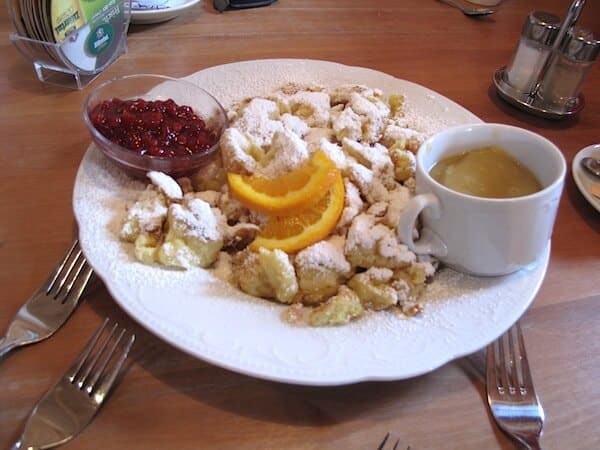
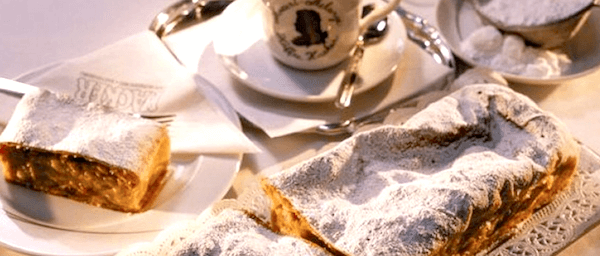
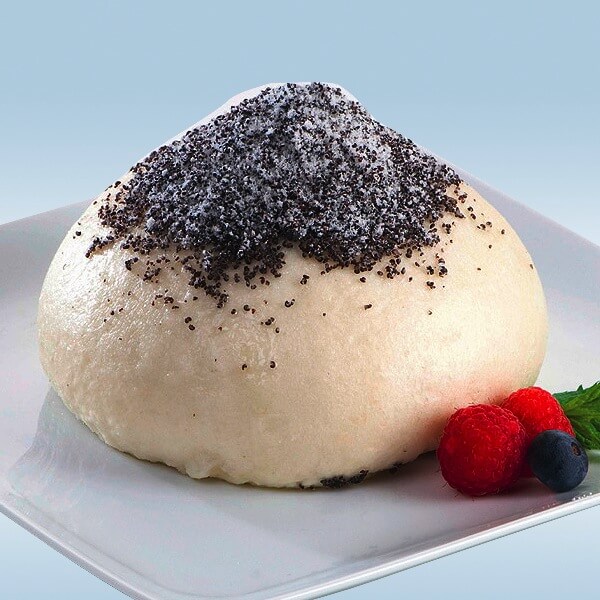
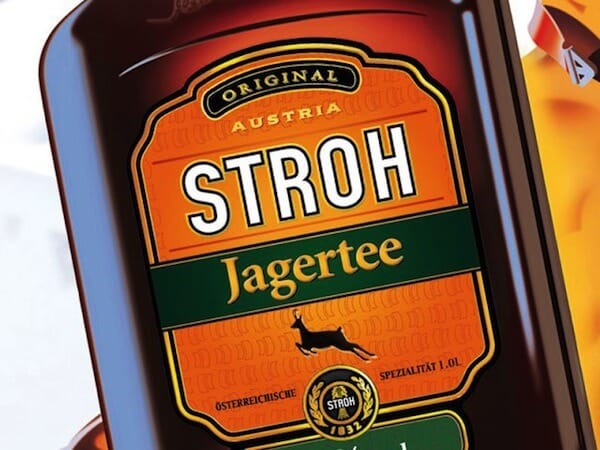
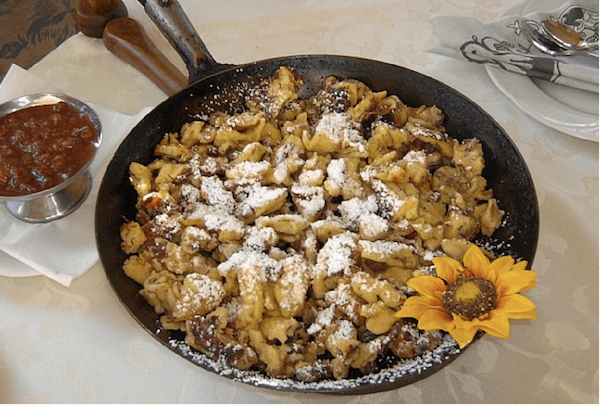
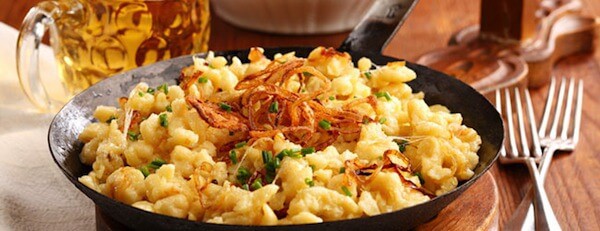
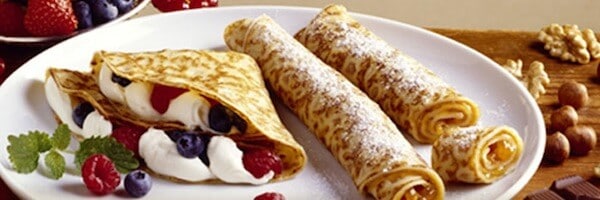
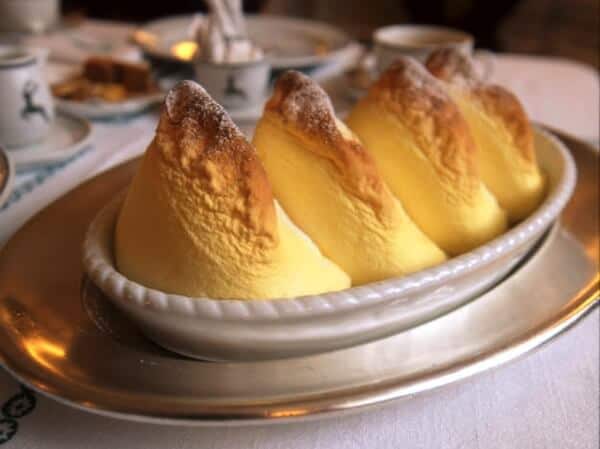
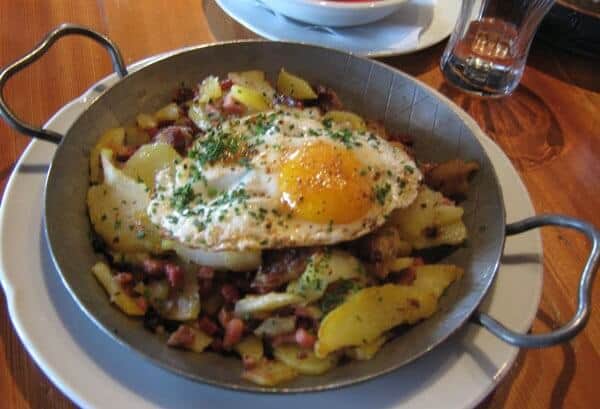
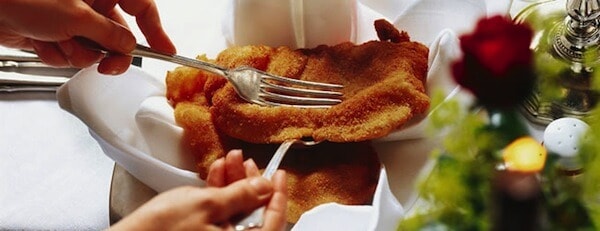


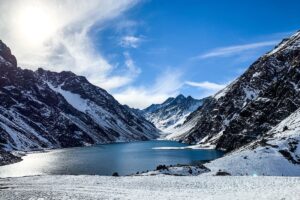

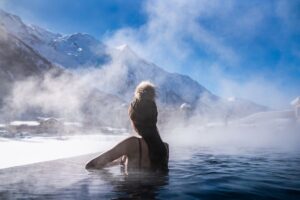
Add Comment